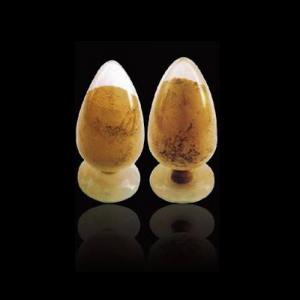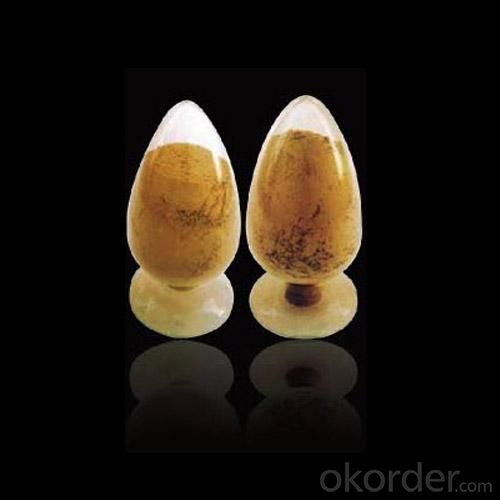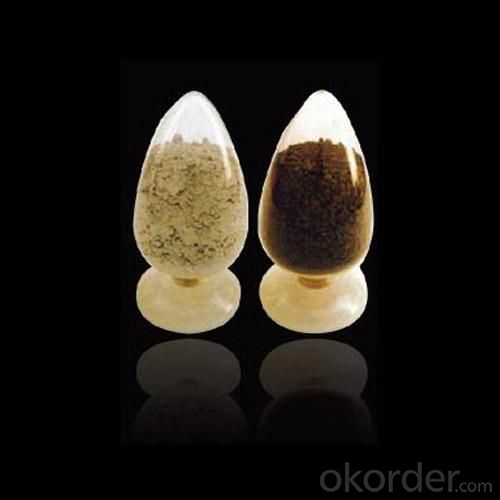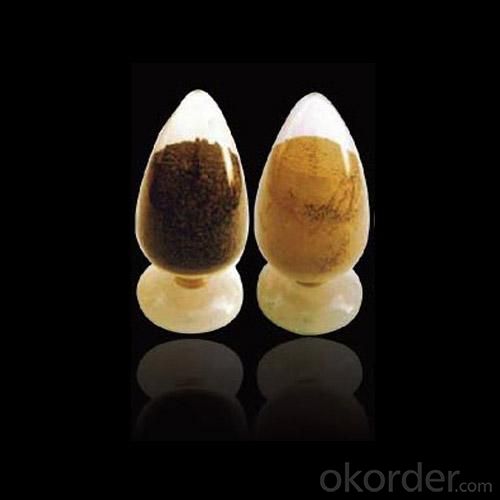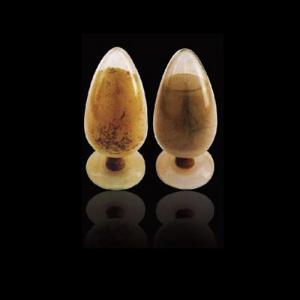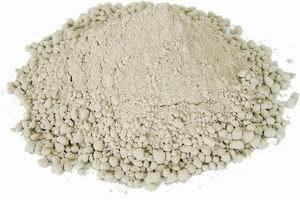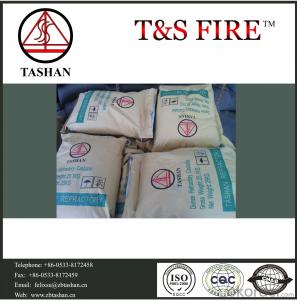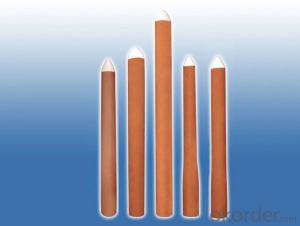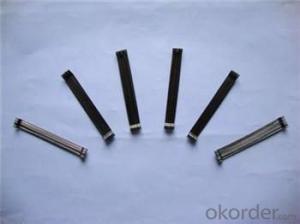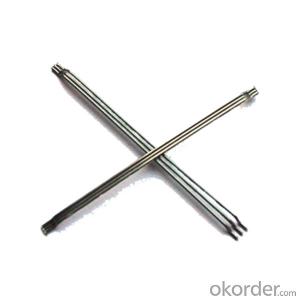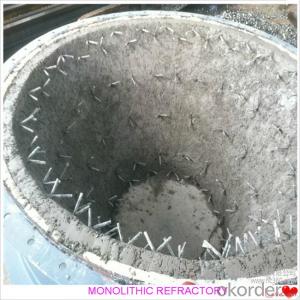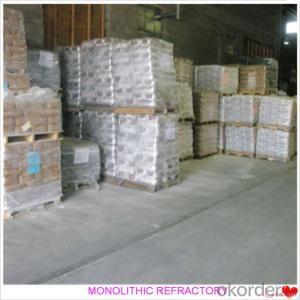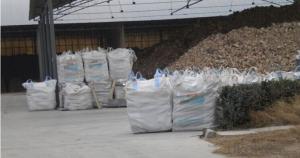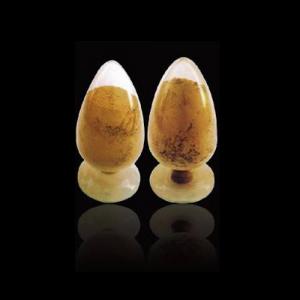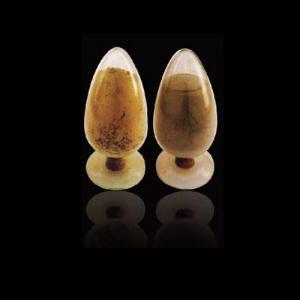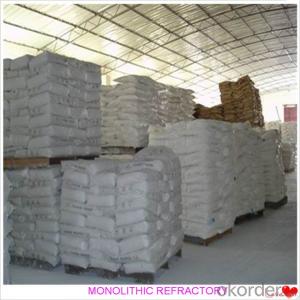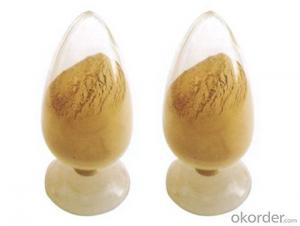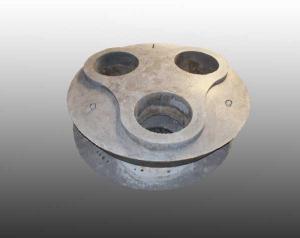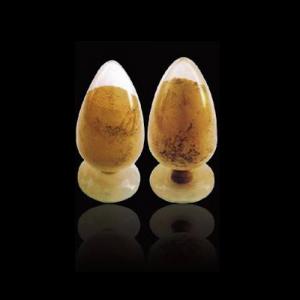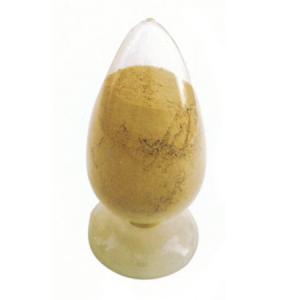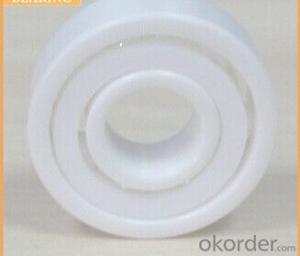Monolithic Refractories for Iron and Steel Industry - High Alumina Based Mortar for Hot Blast Stove
- Loading Port:
- China Main Port
- Payment Terms:
- TT or L/C
- Min Order Qty:
- 2 m.t.
- Supply Capability:
- 5000 Tons Per Month m.t./month
OKorder Service Pledge
OKorder Financial Service
You Might Also Like
General Information of High Alumina Based Mortar for Hot Blast Stove
FIREF high alumina mortar for hot blast stove made as per international standards, is known for its low thermal conductivity, high refractoriness, and excellent thermal shock resistance.
Technical data of High Alumina Based Mortar for Hot Blast Stove
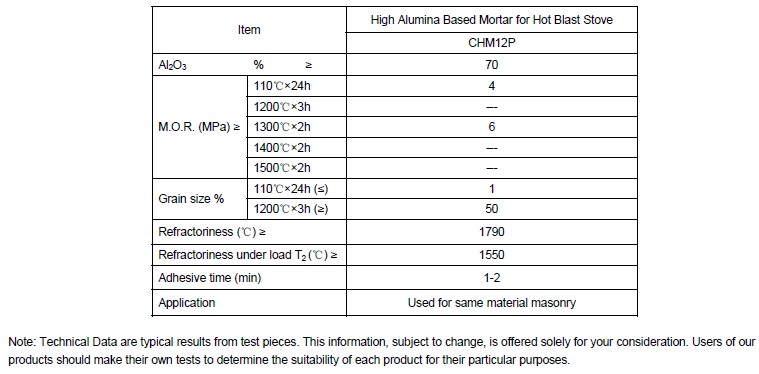
Production line and packing of High Alumina Based Mortar for Hot Blast Stove
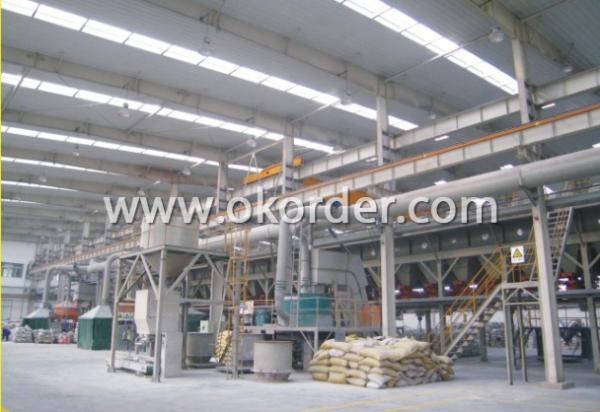
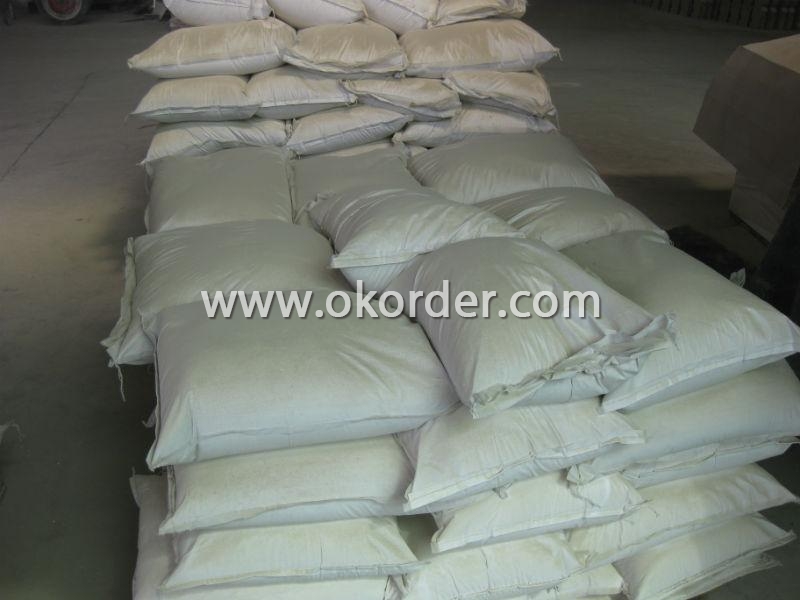
Feature of High Alumina Based Mortar for Hot Blast Stove
High refractoriness
Low thermal conductivity
Excellent mechanical strength
Excellent thermal shock resistance
Application of High Alumina Based Mortar for Hot Blast Stove
FIREF high alumina mortar for hot blast stove can be used with the refractory brics of the alike material.
- Q: How are monolithic refractories different from traditional brick refractories?
- There are several differences between monolithic refractories and traditional brick refractories. Firstly, monolithic refractories are composed of a single, homogeneous material, whereas traditional brick refractories are made up of individual bricks that are pieced together. This variance in construction allows monolithic refractories to possess a more uniform and consistent structure, which can enhance their performance and durability. Secondly, installing monolithic refractories is typically easier compared to traditional brick refractories. Due to their composition, they can be poured or sprayed into place, eliminating the need for precise bricklaying and mortar application. This simplified installation process saves time and labor during construction or repair projects. Furthermore, monolithic refractories often exhibit superior resistance to thermal shock when compared to traditional brick refractories. The homogeneous structure of monolithic refractories enables them to expand and contract more uniformly under thermal stress, reducing the risk of cracking and failure. This characteristic makes monolithic refractories more suitable for applications with rapid temperature changes, such as in furnaces or kilns. Additionally, monolithic refractories offer better resistance to chemical attacks and erosion. Traditional brick refractories may have joints and gaps between bricks, which can become vulnerable to chemical reactions or erosion over time. Conversely, monolithic refractories possess a seamless structure that minimizes the risk of chemical penetration and erosion, enhancing their longevity and performance. In conclusion, monolithic refractories provide advantages in terms of uniformity, ease of installation, thermal shock resistance, and chemical resistance compared to traditional brick refractories. These disparities make monolithic refractories the preferred choice for numerous industrial applications that involve high temperatures and harsh environments.
- Q: How do monolithic refractories improve the efficiency of ladle and tundish preheating stations?
- Monolithic refractories play a crucial role in enhancing the efficiency of ladle and tundish preheating stations. These refractories are specifically designed to withstand high temperatures and thermal shocks, making them ideal for use in preheating applications. One key way in which monolithic refractories improve efficiency is by providing excellent heat insulation. These refractories have low thermal conductivity, meaning they minimize heat loss from the preheating station to the surroundings. As a result, more heat is retained within the ladle or tundish preheating station, leading to faster and more efficient heating of the vessel. Additionally, monolithic refractories offer superior heat retention properties. Once heated, these refractories have the ability to store and release heat gradually over time. This characteristic allows for a more consistent and controlled heating process in the ladle or tundish preheating station. By maintaining a stable temperature, the refractories ensure that the vessel is heated uniformly and prevent thermal shocks that could lead to cracking or other damage. Furthermore, monolithic refractories have excellent resistance to chemical reactions and erosion caused by molten metals and slag. Ladles and tundishes are often exposed to corrosive environments, and the use of monolithic refractories helps to protect against degradation and extend the lifespan of the preheating station. This durability reduces the need for frequent maintenance and replacement, leading to cost savings and improved overall efficiency. In summary, monolithic refractories improve the efficiency of ladle and tundish preheating stations by providing excellent heat insulation, heat retention, and resistance to chemical reactions. These properties result in faster and more uniform heating, reduced heat loss, and increased durability of the preheating station. Ultimately, these benefits contribute to improved productivity and cost-effectiveness in the steelmaking process.
- Q: In iron and steel industry, the main raw materials for blast furnace ironmaking are iron ore, coke and limestone. What's the use of limestone here?
- At high temperatures, limestone (calcium carbonate) breaks down into lime (calcium oxide, which is useful) and carbon dioxide.
- Q: What are the key characteristics of monolithic refractories for electric arc furnace applications?
- Monolithic refractories for electric arc furnace applications have several key characteristics that make them suitable for the harsh conditions and high temperatures encountered in these environments. Firstly, monolithic refractories offer excellent thermal shock resistance. Electric arc furnaces operate at extremely high temperatures, and the rapid temperature changes that occur during the melting and refining processes can cause significant thermal stress. Monolithic refractories are designed to withstand these thermal shocks without cracking or spalling, ensuring the longevity and performance of the lining. Secondly, monolithic refractories have high resistance to chemical attack. Electric arc furnaces involve the melting and refining of various metals and alloys, which can create highly corrosive atmospheres. Monolithic refractories are formulated with chemically inert materials and additives that provide resistance to the corrosive effects of molten metals and slag, protecting the lining from chemical degradation. Another important characteristic of monolithic refractories for electric arc furnace applications is their high refractoriness. Refractoriness refers to the ability of a material to retain its strength and integrity at high temperatures. Electric arc furnaces typically operate at temperatures above 1500°C, and monolithic refractories are designed to withstand these extreme conditions without significant loss of properties or degradation. Furthermore, monolithic refractories offer good thermal conductivity. This property allows for efficient heat transfer throughout the lining, ensuring uniform heating and melting of the charge material. It also helps to minimize hot spots and thermal gradients, which can lead to uneven wear and premature failure of the lining. Lastly, monolithic refractories are known for their ease of installation and repair. Unlike traditional brick or block refractories, monolithic materials can be cast, sprayed, or rammed into place, eliminating the need for complex masonry work. This not only saves time and labor but also allows for easy maintenance and repair of the lining, reducing downtime and improving overall furnace efficiency. In summary, the key characteristics of monolithic refractories for electric arc furnace applications include excellent thermal shock resistance, high chemical resistance, high refractoriness, good thermal conductivity, and ease of installation and repair. These properties make monolithic refractories ideal for withstanding the harsh conditions and demanding requirements of electric arc furnace operations.
- Q: How do monolithic refractories contribute to the overall efficiency of ladle slagging operations?
- Monolithic refractories contribute to the overall efficiency of ladle slagging operations by providing excellent thermal insulation, high resistance to thermal shock, and superior corrosion resistance. These properties allow for better heat retention, reduced heat loss, and extended refractory lifespan. As a result, ladle slagging operations can be carried out at higher temperatures with minimal refractory wear and tear, leading to increased productivity and cost savings. Additionally, monolithic refractories offer ease of installation and maintenance, ensuring quick turnaround times and minimizing downtime during ladle slagging operations.
- Q: What are the environmental considerations associated with monolithic refractories?
- Monolithic refractories, utilized in various high-temperature applications, pose several environmental concerns that must be taken into account. Firstly, the production of monolithic refractories necessitates the utilization of raw materials such as clay, silica, and alumina, which are frequently extracted from the earth, resulting in habitat destruction, soil erosion, and water pollution. Furthermore, the manufacturing process of monolithic refractories commonly involves considerable energy consumption and the emission of greenhouse gases. The firing of refractory materials necessitates high temperatures, often achieved through the combustion of fossil fuels, contributing to carbon dioxide emissions and climate change. These emissions have broad environmental consequences, including air pollution, acid rain, and ozone layer depletion. Additionally, the disposal of monolithic refractories at the end of their useful life can present environmental challenges. Although monolithic refractories are highly durable and long-lasting, there may come a time when replacement or repair is necessary. The disposal of refractory waste can be problematic as it often contains hazardous substances such as chromium, lead, and asbestos. Inadequate disposal methods can lead to contamination of soil and water, posing risks to both human health and the environment. To address these environmental concerns, efforts are underway to develop more sustainable refractory materials and manufacturing processes. For instance, alternative raw materials like recycled refractory materials or industrial by-products can be employed to decrease the environmental impact of mining. Moreover, the adoption of more energy-efficient manufacturing techniques, such as utilizing renewable energy sources or implementing advanced firing technologies, can help minimize greenhouse gas emissions. In conclusion, the environmental considerations associated with monolithic refractories encompass habitat destruction, energy consumption, greenhouse gas emissions, and waste disposal. Prioritizing sustainability and implementing measures to mitigate these environmental impacts, such as using alternative raw materials, enhancing manufacturing processes, and endorsing responsible waste management practices, are imperative for the refractory industry.
- Q: Can monolithic refractories be used in electric arc furnaces and induction furnaces?
- Yes, monolithic refractories can be used in both electric arc furnaces and induction furnaces. Monolithic refractories are versatile and can be shaped and installed easily, making them suitable for various types of furnaces, including electric arc furnaces and induction furnaces. These refractories are composed of a single material, such as castables, gunning mixes, ramming mixes, and plastic refractories, which can withstand high temperatures and thermal shock. They are commonly used to line the walls, roofs, and bottoms of furnaces to provide insulation and protection against the extreme heat generated during the melting and refining processes. Monolithic refractories offer excellent resistance to chemical attack, erosion, and mechanical stress, making them ideal for use in electric arc furnaces and induction furnaces, where intense heat and harsh operating conditions are encountered.
- Q: What types of monolithic refractories are commonly used in the iron and steel industry?
- In the iron and steel industry, several types of monolithic refractories are commonly used due to their high resistance to extreme temperatures and mechanical stresses. These refractories are essential for lining furnaces, ladles, and other equipment used in the production of iron and steel. One commonly used monolithic refractory in this industry is castable refractory. It is a mixture of refractory aggregates, binders, and additives that can be poured or cast into various shapes and sizes. Castable refractories are versatile and can be easily installed, making them suitable for lining large furnaces and ladles. They offer good thermal insulation and excellent resistance to thermal shocks. Another type of monolithic refractory used in the iron and steel industry is plastic refractory. It consists of a high-alumina refractory aggregate mixed with a bonding agent, usually clay. Plastic refractories have a high plasticity and can be easily shaped by hand or with a trowel. They are commonly used for repairs and patching in furnaces and ladles. Ramming refractories are also commonly employed in the iron and steel industry. These refractories are made of granular refractory materials mixed with a binder. They are installed by ramming the mixture into the desired shape using a pneumatic hammer or manual ramming tools. Ramming refractories offer high resistance to abrasion and erosion, making them suitable for lining the bottoms of furnaces and other areas subjected to intense mechanical wear. Lastly, gunning refractories are frequently used in the iron and steel industry. Gunning refractories are made of fine refractory powders mixed with water or a bonding agent. They are applied using a gunning machine, which propels the refractory material onto the surface to be lined. Gunning refractories are commonly used for repairing and maintaining the linings of ladles, tundishes, and other equipment. Overall, the iron and steel industry relies on a variety of monolithic refractories such as castables, plastics, rammings, and gunnings to ensure the reliable and efficient operation of their equipment in high-temperature environments. These refractories provide excellent thermal insulation, resistance to thermal shocks, and mechanical strength essential for the production of iron and steel.
- Q: What are the main challenges in designing the lining system with monolithic refractories?
- One of the main challenges in designing the lining system with monolithic refractories is achieving proper installation. Monolithic refractories are typically installed by casting, gunning, or shotcreting, which requires skilled labor and precise application techniques. Any errors or inconsistencies during installation can compromise the performance and longevity of the lining system. Another challenge is ensuring adequate bonding between the monolithic refractories and the existing structure. Proper adhesion is crucial to prevent refractory material from delaminating or separating from the underlying surface. Factors such as surface preparation, temperature differentials, and mechanical stress can affect the bond strength, requiring careful consideration during the design phase. The compatibility of monolithic refractories with various operating conditions is another challenge. Refractory materials are exposed to extreme temperatures, chemical reactions, and thermal cycling, which can lead to degradation and failure. Designing a lining system that can withstand these conditions requires a thorough understanding of the refractory properties and the specific requirements of the application. Furthermore, selecting the right monolithic refractory material for a given lining system is a significant challenge. There are various types of monolithic refractories available, each with its own strengths and weaknesses. Factors such as temperature range, chemical composition, thermal conductivity, abrasion resistance, and thermal shock resistance need to be considered when choosing the most suitable material for the application. Lastly, maintaining the integrity of the monolithic refractory lining system over its lifetime is a challenge. Regular inspections, repairs, and maintenance are necessary to address any issues such as cracks, erosion, or spalling. Developing a comprehensive maintenance plan and ensuring access to skilled personnel for repairs are essential aspects of designing a successful lining system with monolithic refractories.
- Q: How are monolithic refractories installed and repaired in iron and steel production facilities?
- Monolithic refractories in iron and steel production facilities are installed by first preparing the surface by removing any existing refractory materials and cleaning it thoroughly. The monolithic refractory is then mixed with water to form a workable consistency and applied to the surface using various methods such as spraying, troweling, or casting. After installation, the refractory is allowed to cure and dry before being heated gradually to the desired operating temperature. In terms of repair, damaged or worn-out monolithic refractories are typically removed by chipping or cutting, and the surface is again cleaned. The new refractory material is then mixed and applied to the repaired area using the same techniques as installation. It is important to ensure proper curing and drying of the repaired refractory before subjecting it to heat. Regular inspection and maintenance are crucial to identify any potential issues and prevent major repairs or replacement in the future.
1. Manufacturer Overview
| Location | Henan, China |
| Year Established | 2007 |
| Annual Output Value | Above US$ 60 Million |
| Main Markets | Mid East; Eastern Europe; North America |
| Company Certifications | ISO 9001:2008 |
2. Manufacturer Certificates
| a) Certification Name | |
| Range | |
| Reference | |
| Validity Period |
3. Manufacturer Capability
| a) Trade Capacity | |
| Nearest Port | Tianjin |
| Export Percentage | 31% - 50% |
| No.of Employees in Trade Department | 21-50 People |
| Language Spoken: | English; Chinese |
| b) Factory Information | |
| Factory Size: | Above 36,000 square meters |
| No. of Production Lines | Above 5 |
| Contract Manufacturing | OEM Service Offered |
| Product Price Range | Average |
Send your message to us
Monolithic Refractories for Iron and Steel Industry - High Alumina Based Mortar for Hot Blast Stove
- Loading Port:
- China Main Port
- Payment Terms:
- TT or L/C
- Min Order Qty:
- 2 m.t.
- Supply Capability:
- 5000 Tons Per Month m.t./month
OKorder Service Pledge
OKorder Financial Service
Similar products
Hot products
Hot Searches
Related keywords
